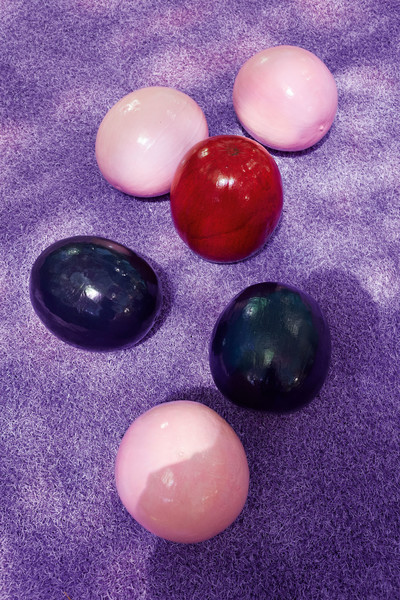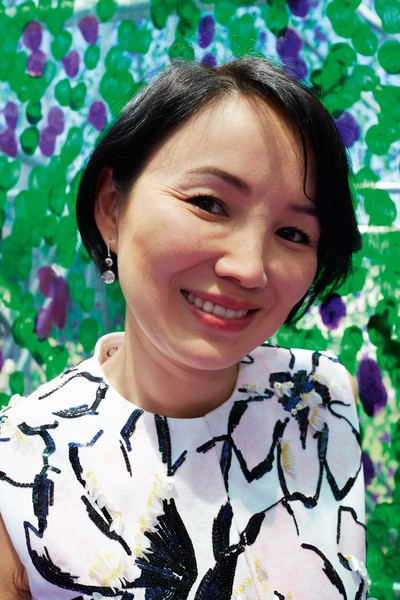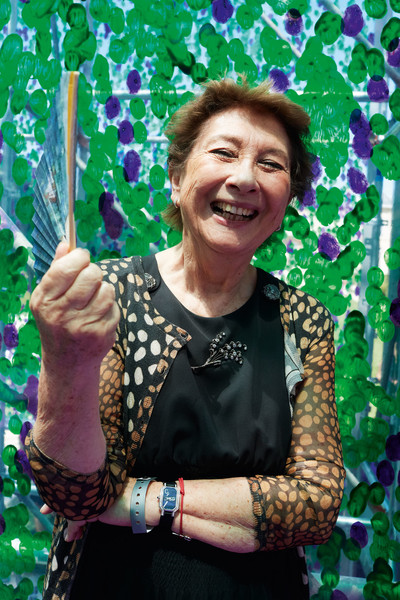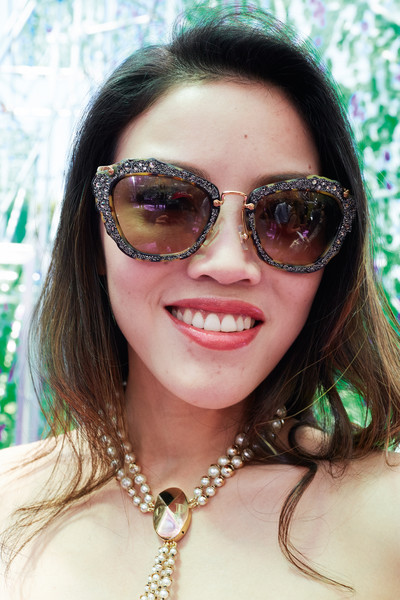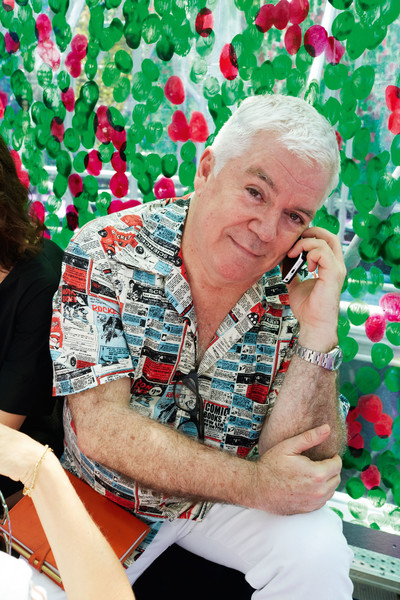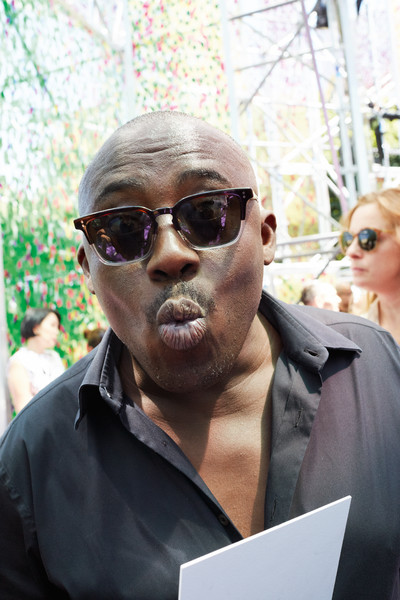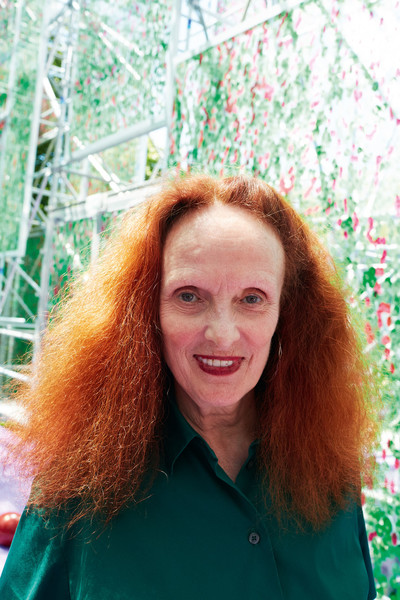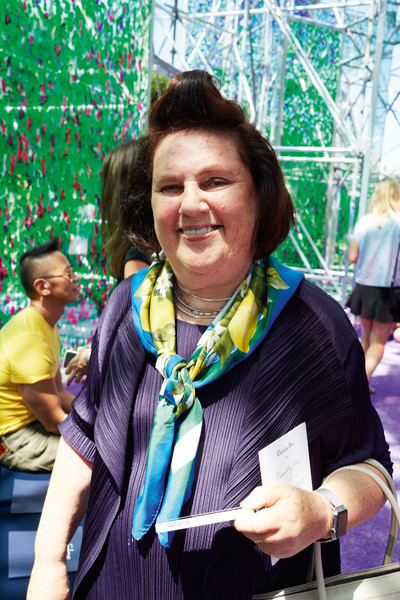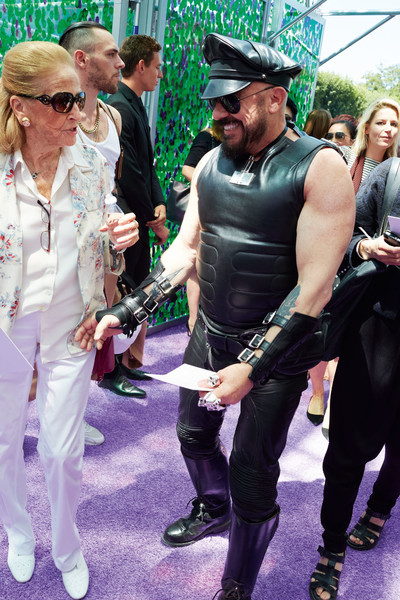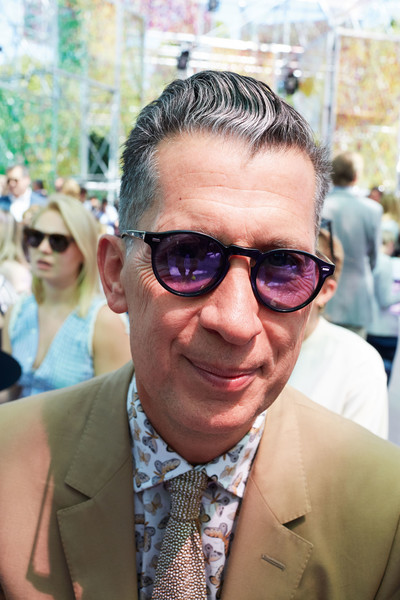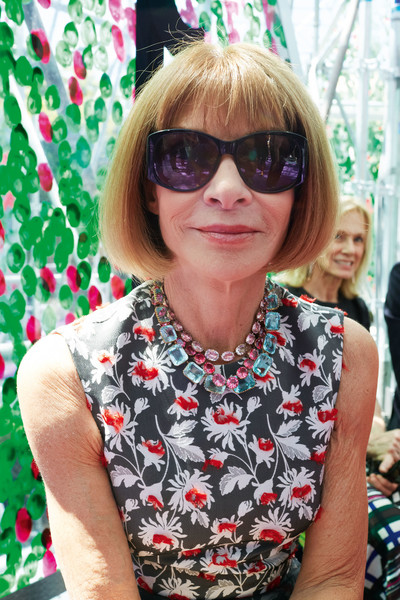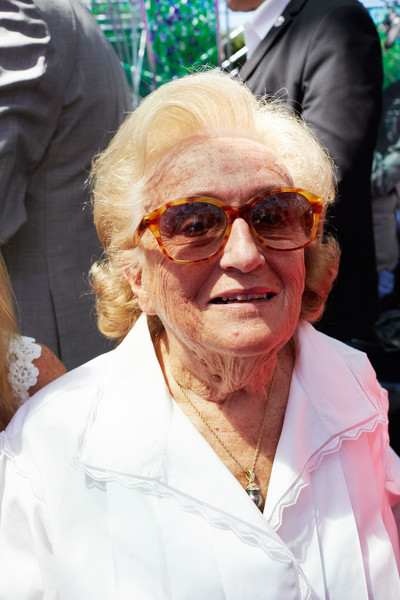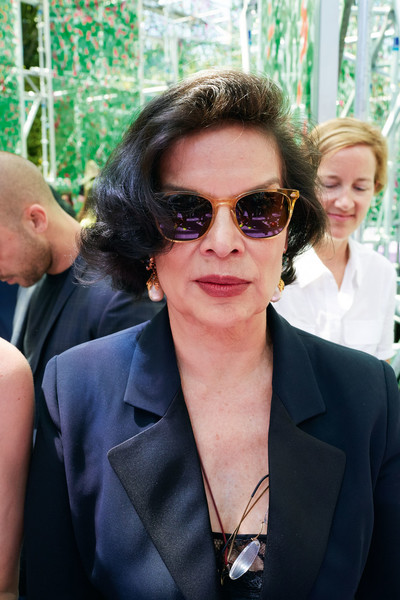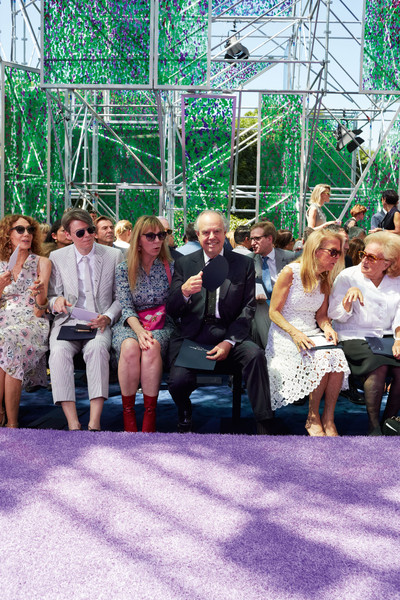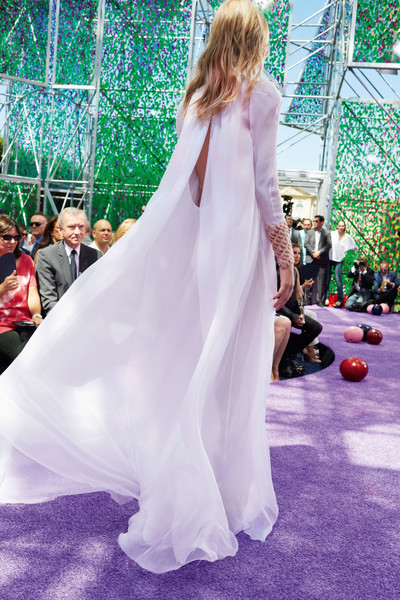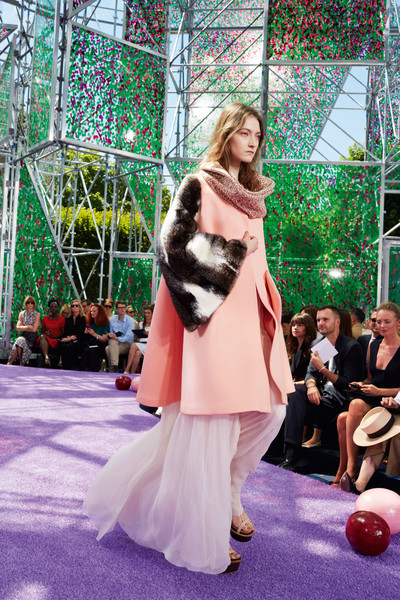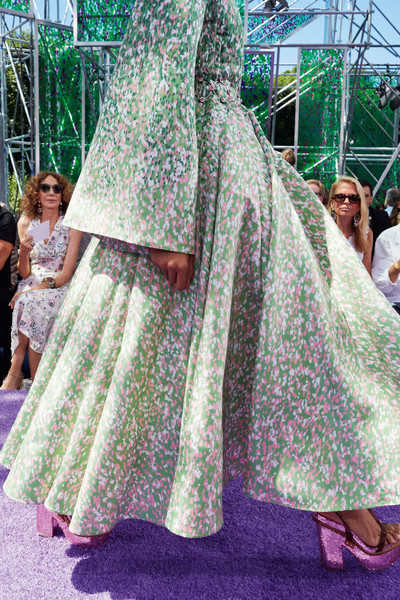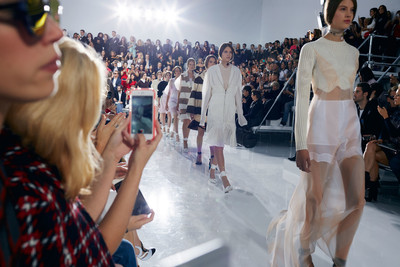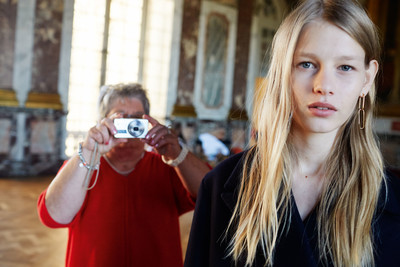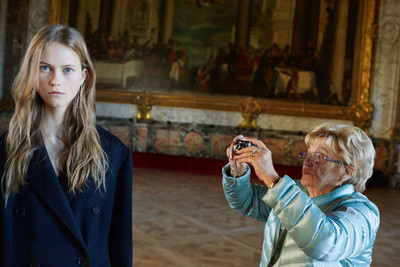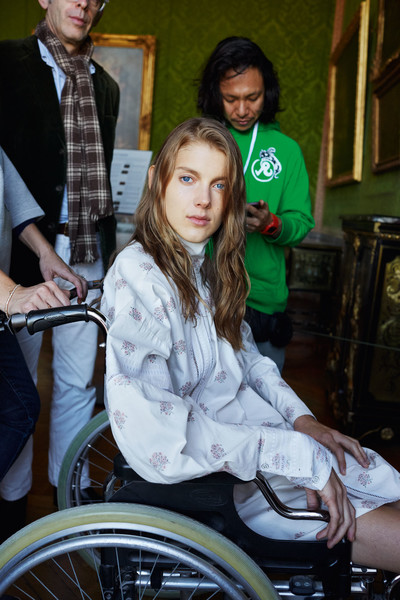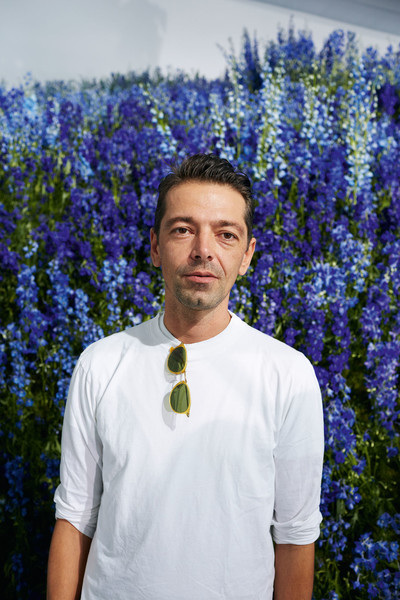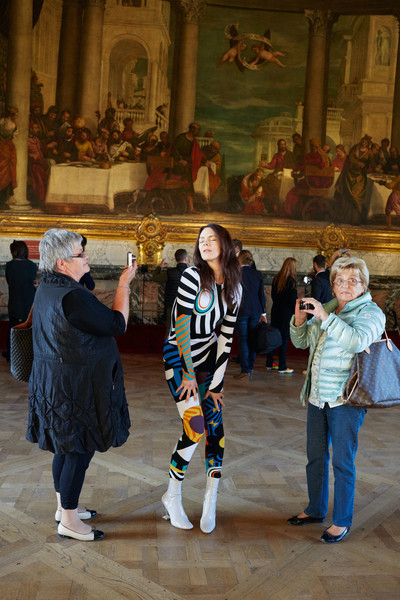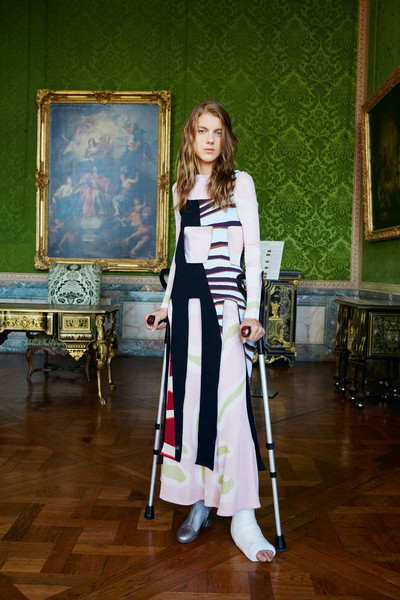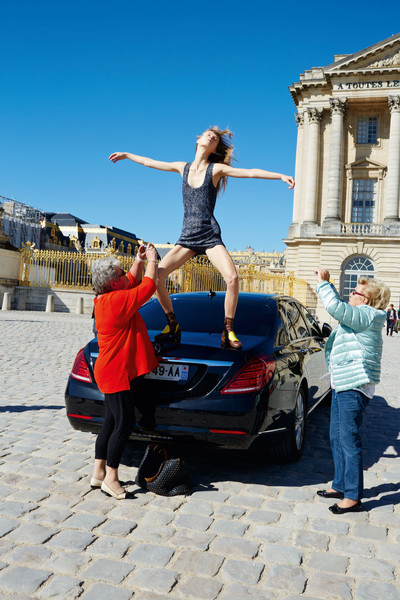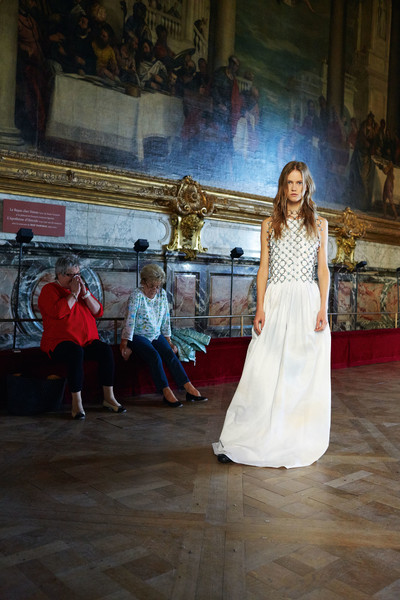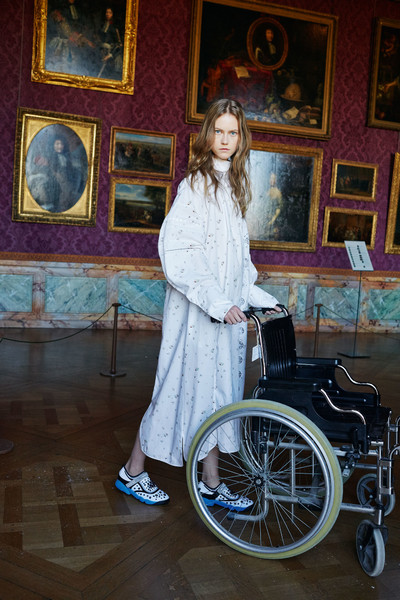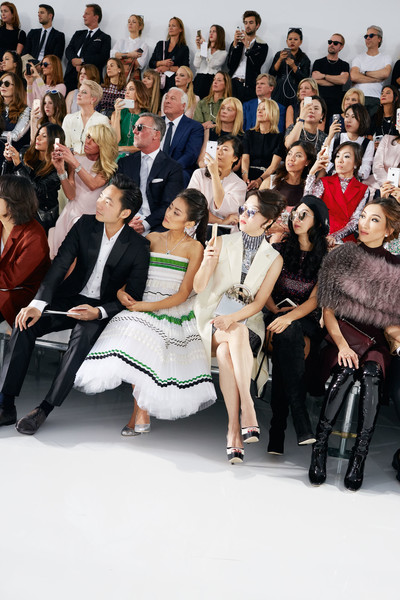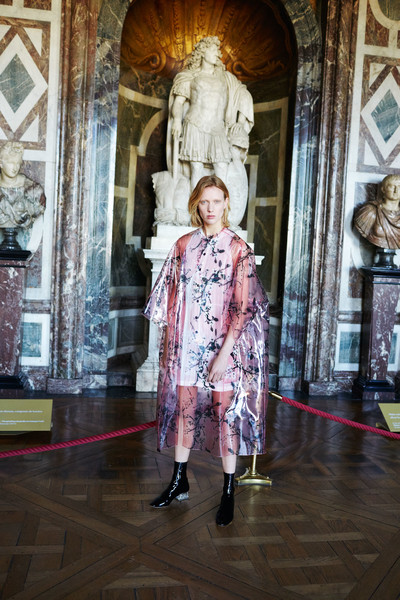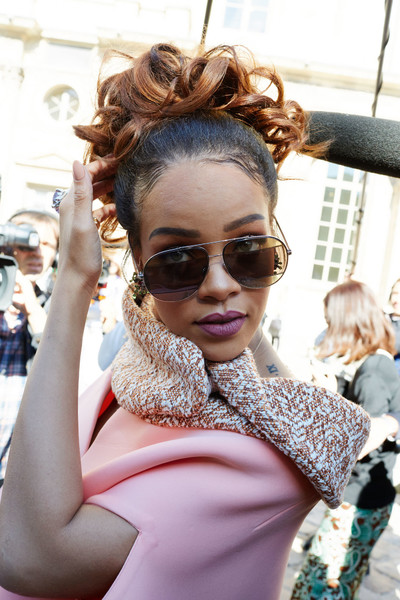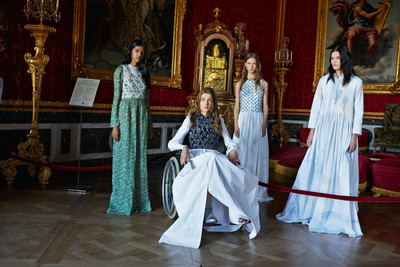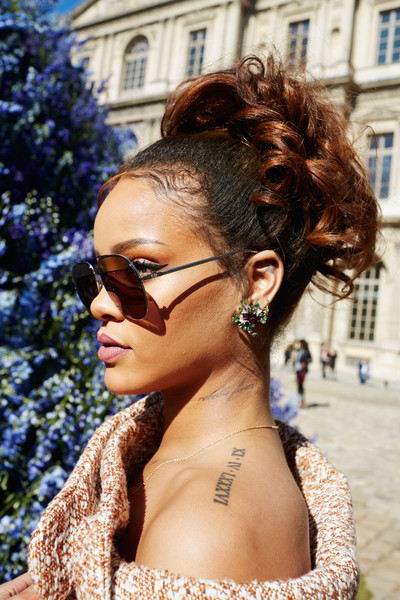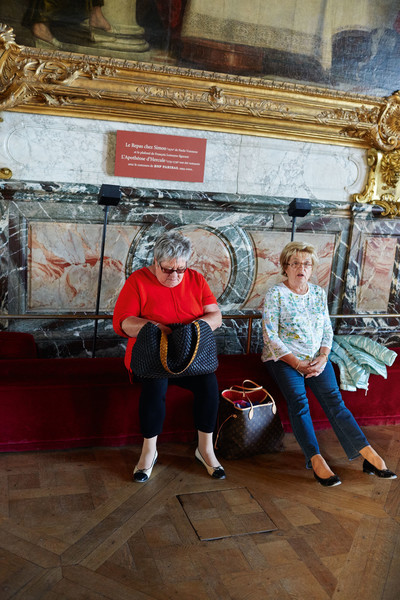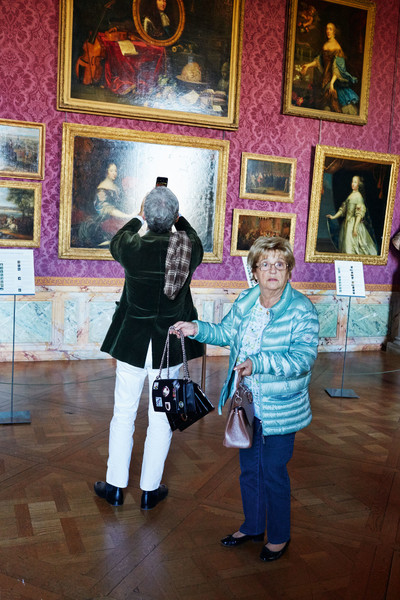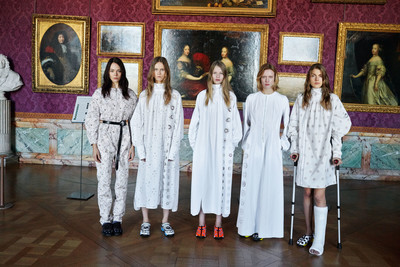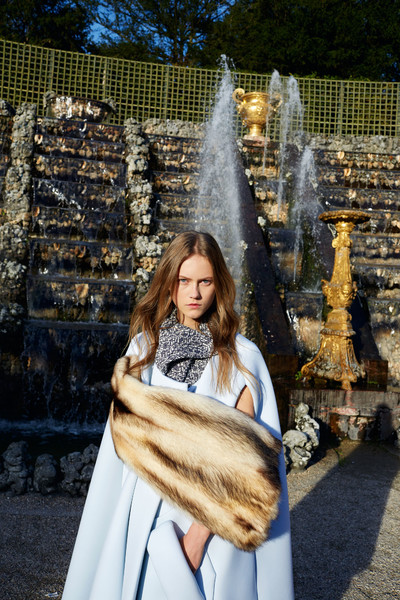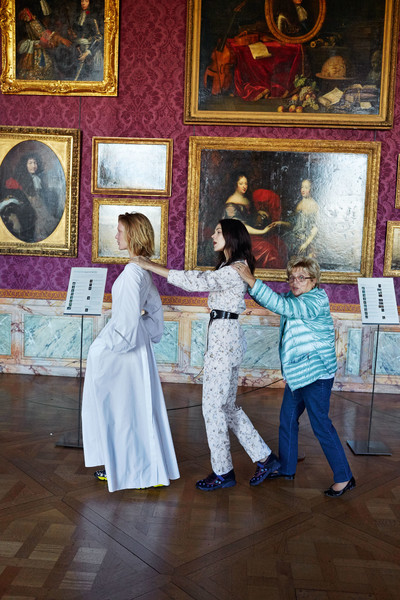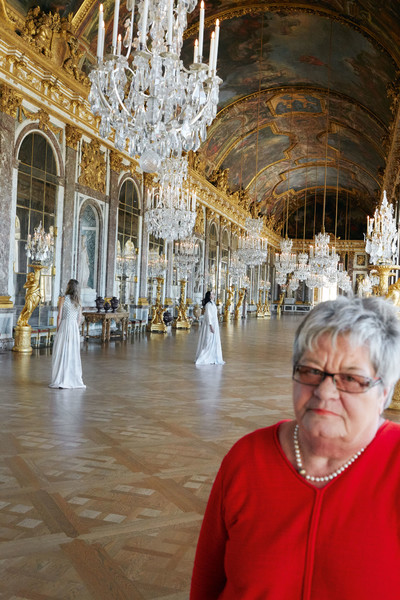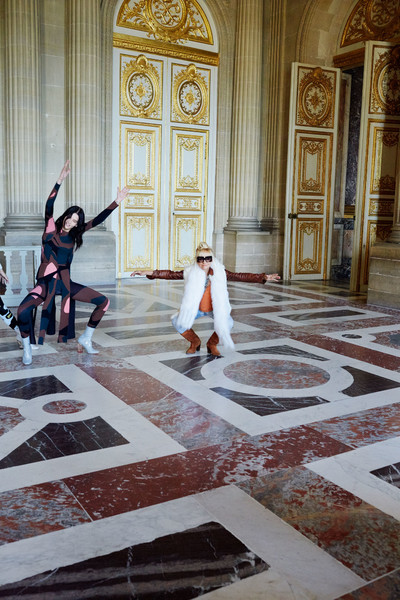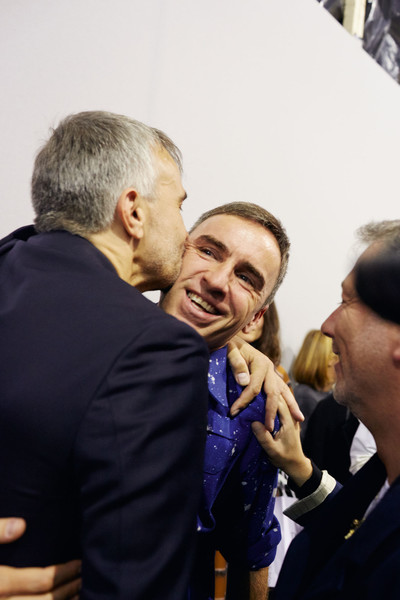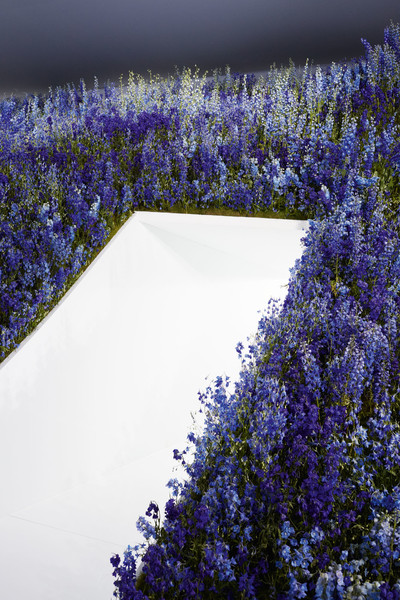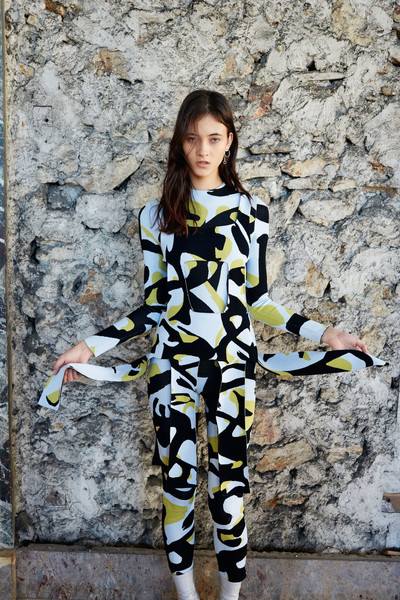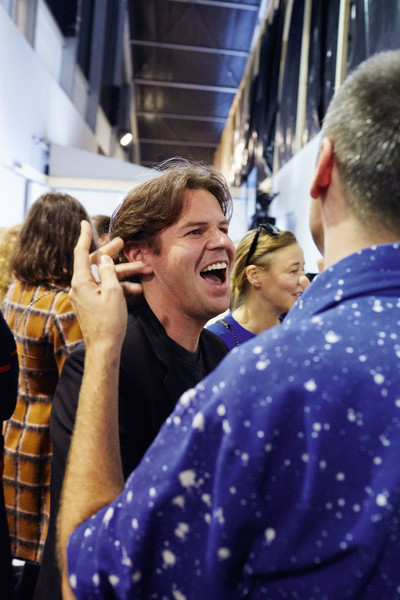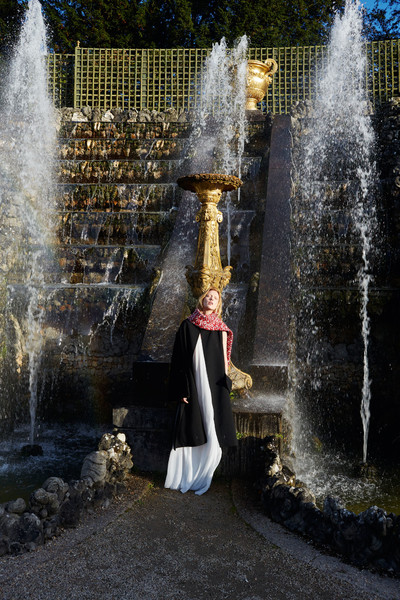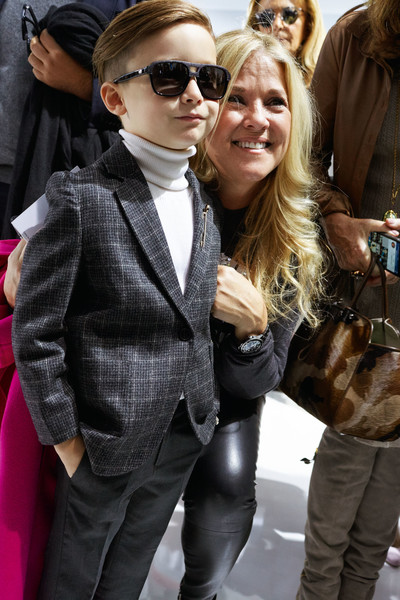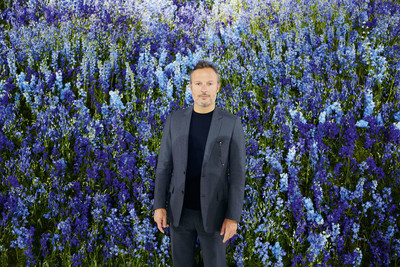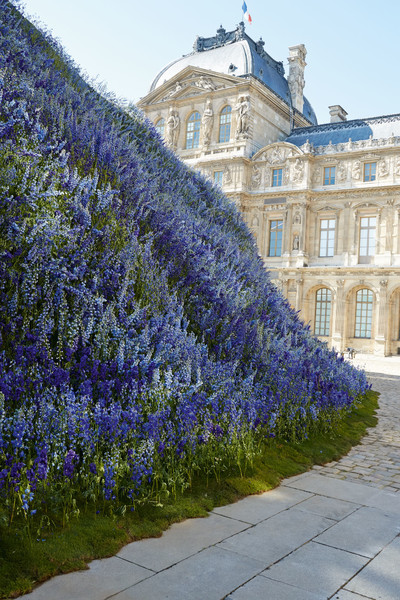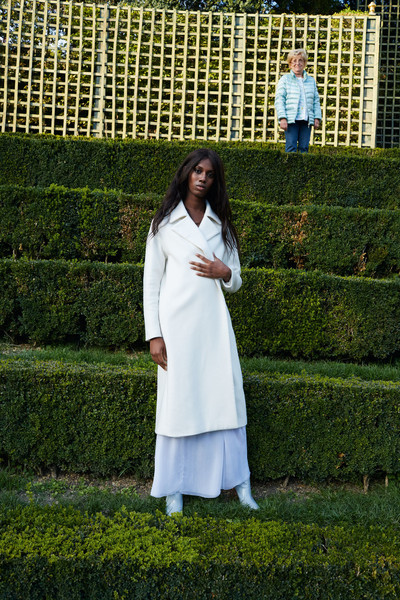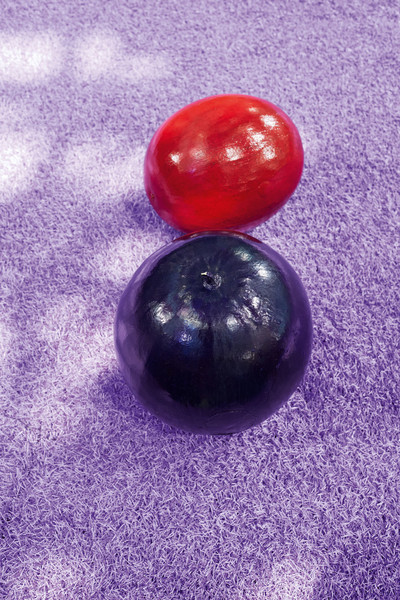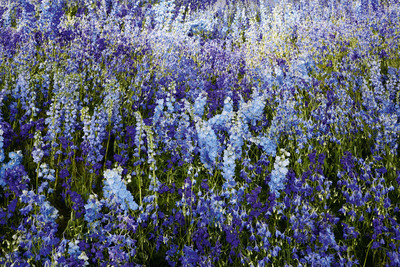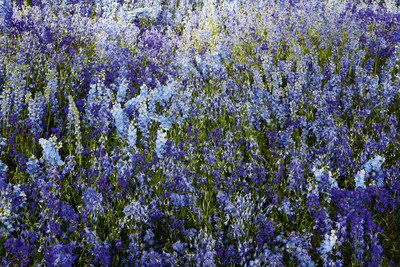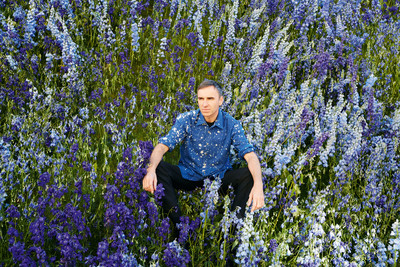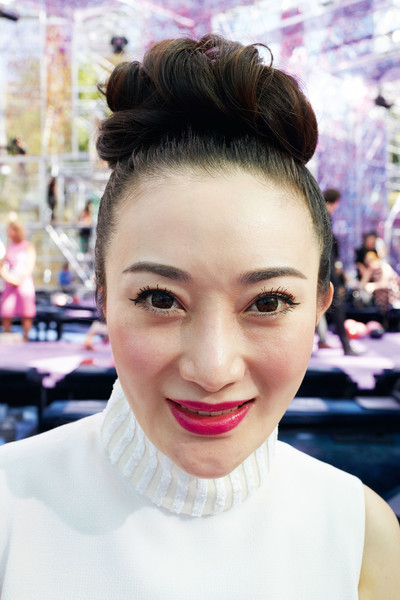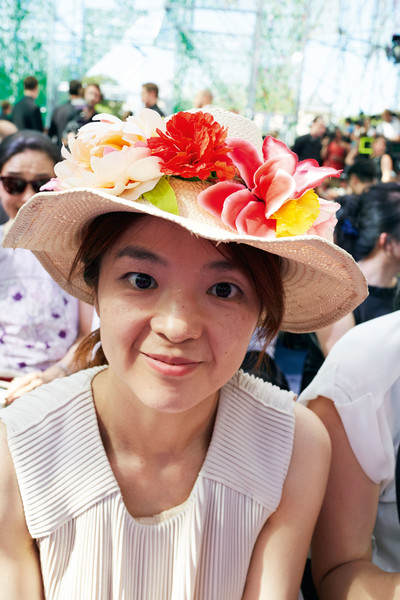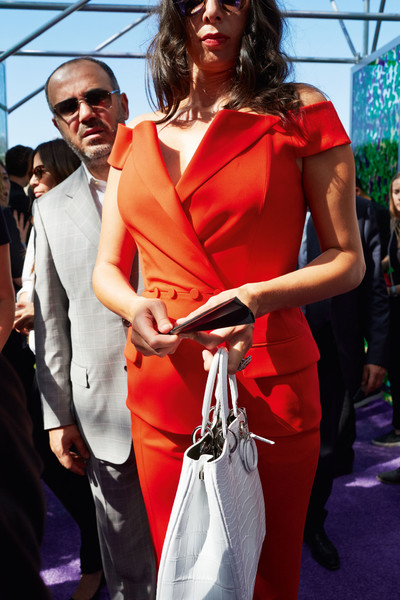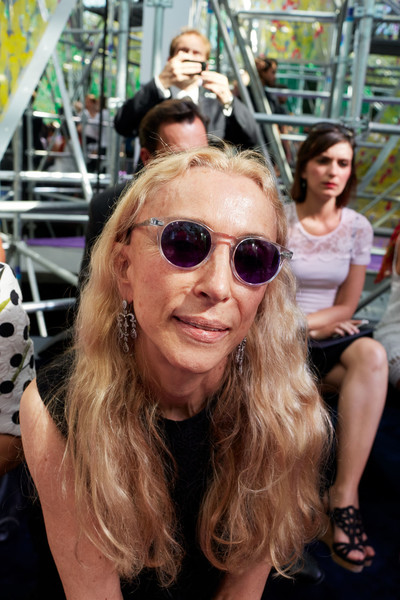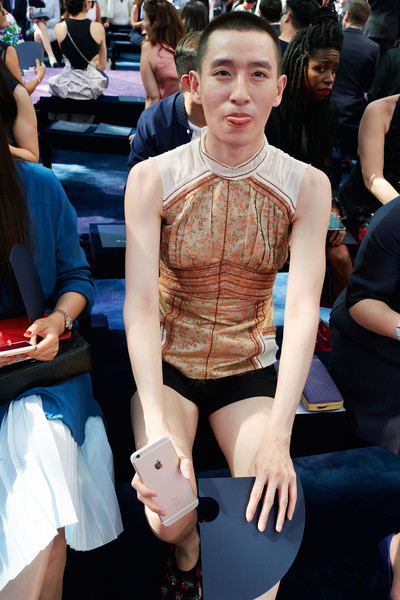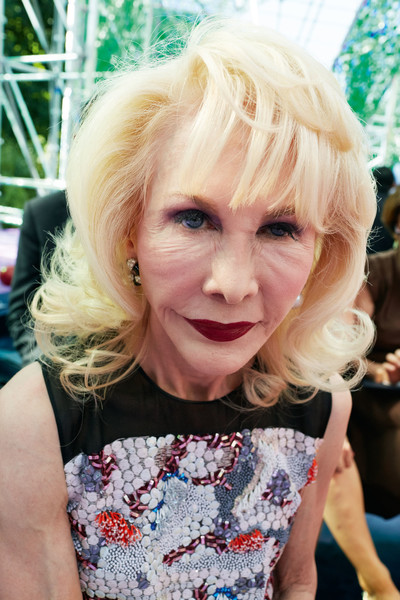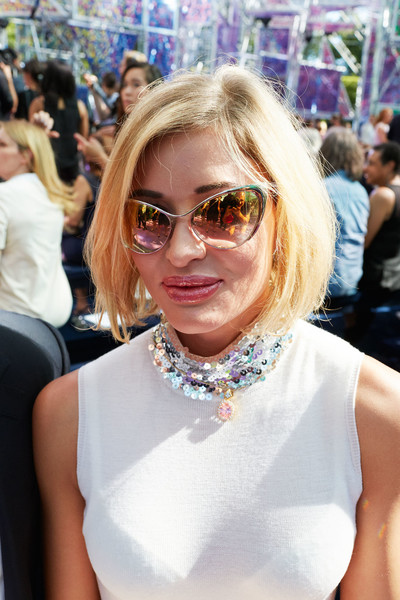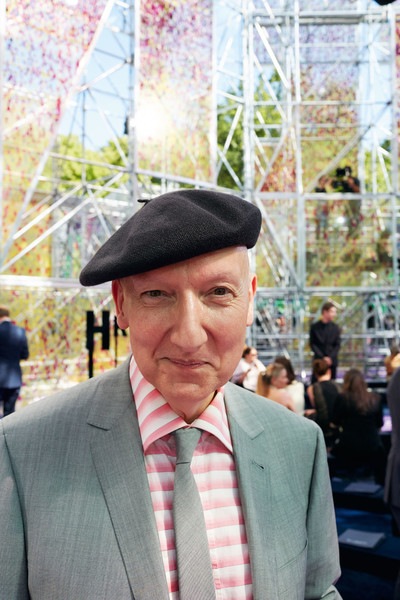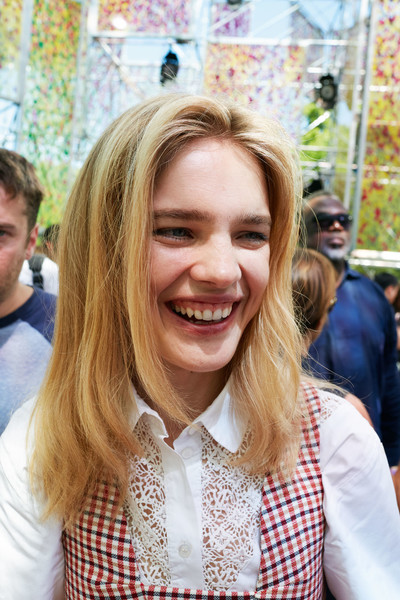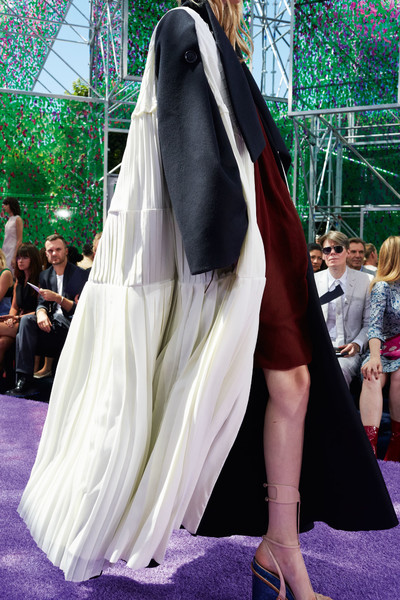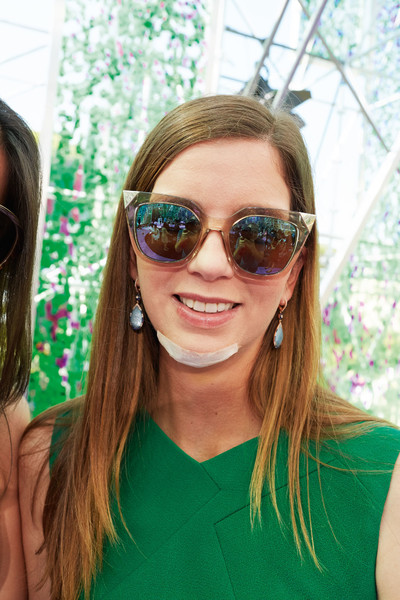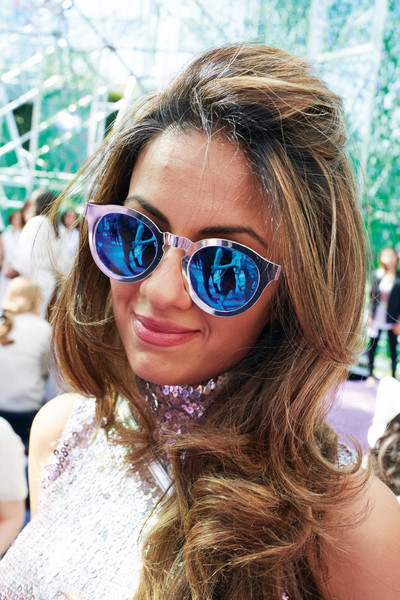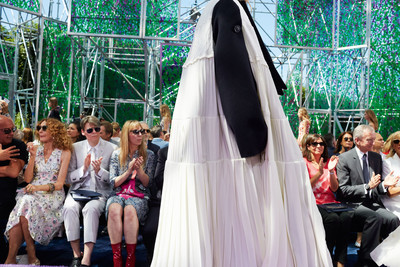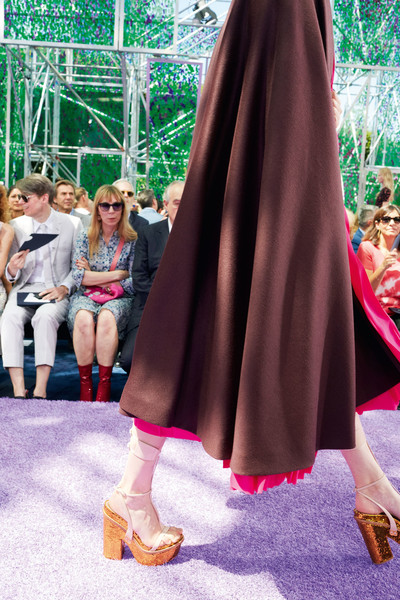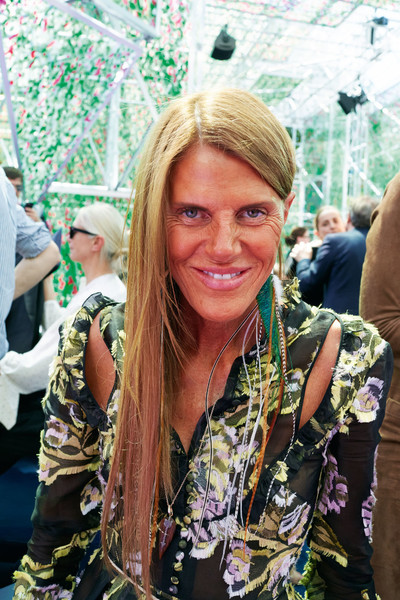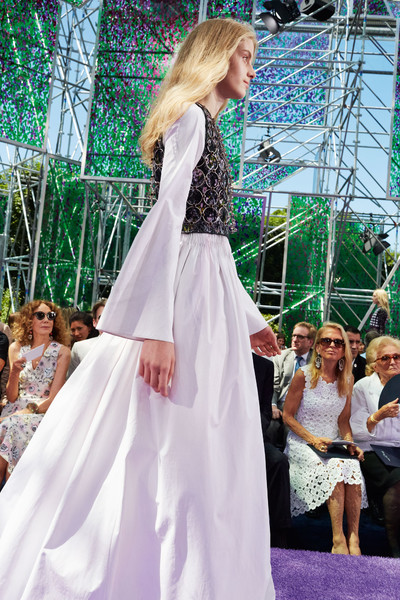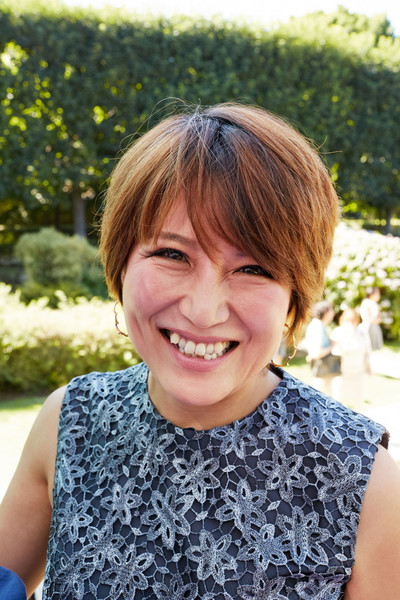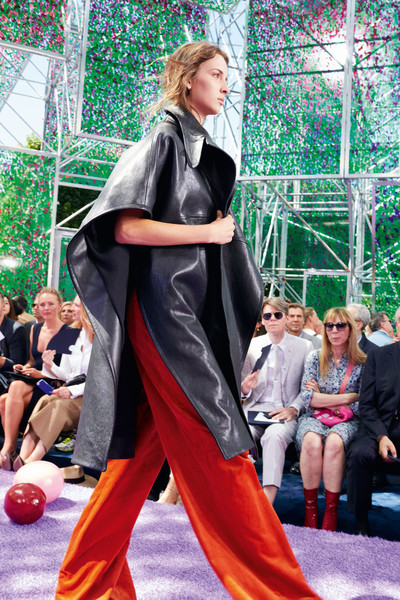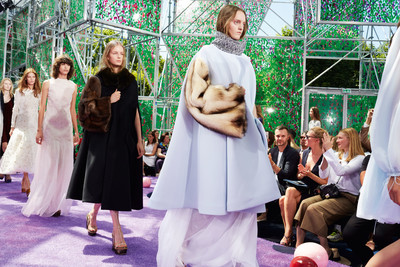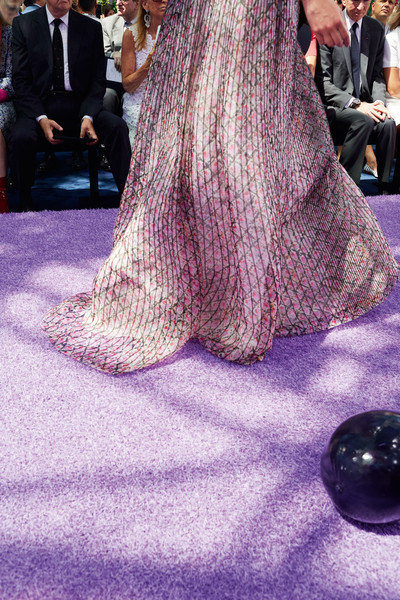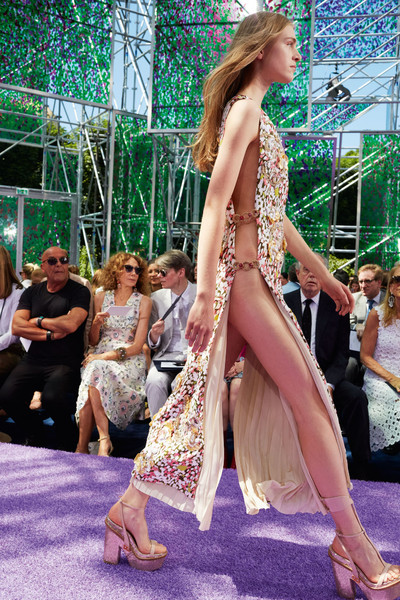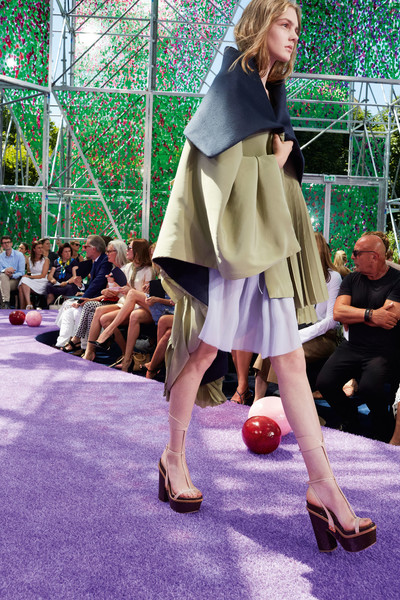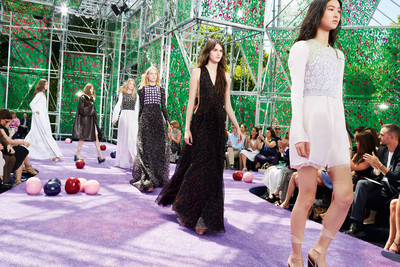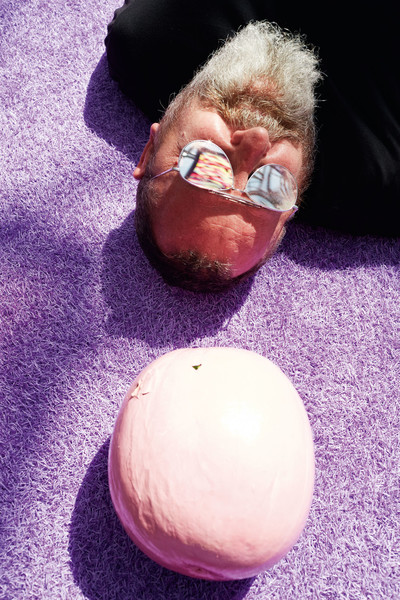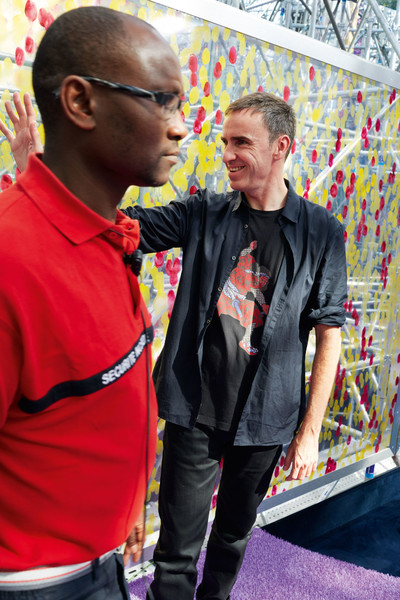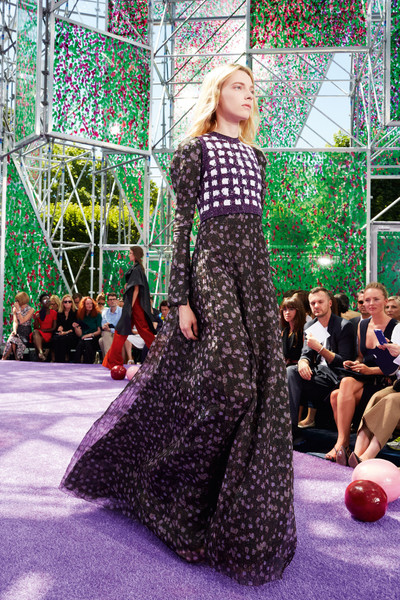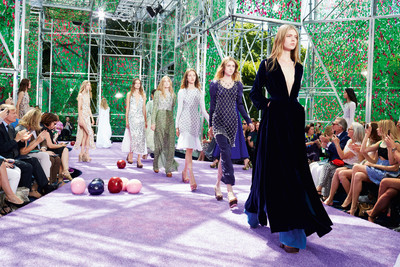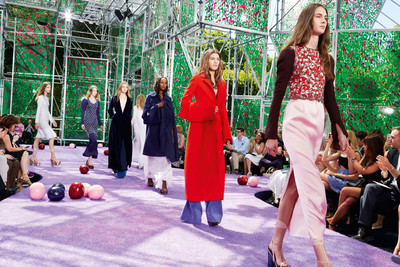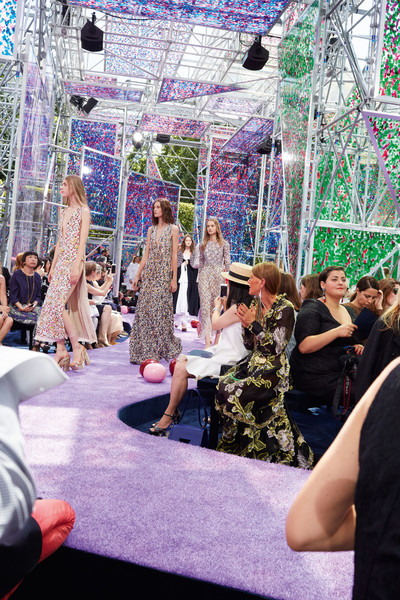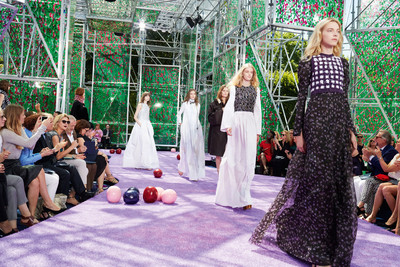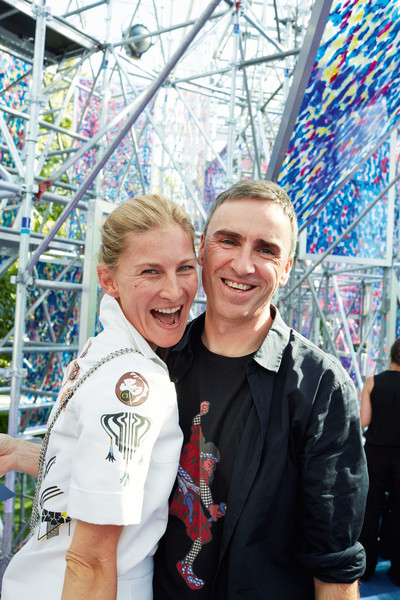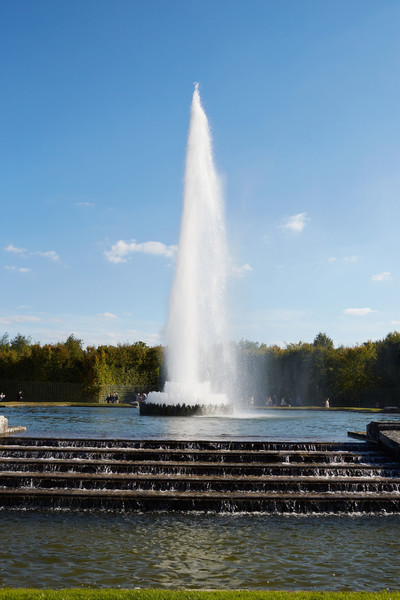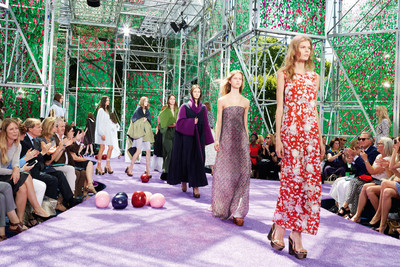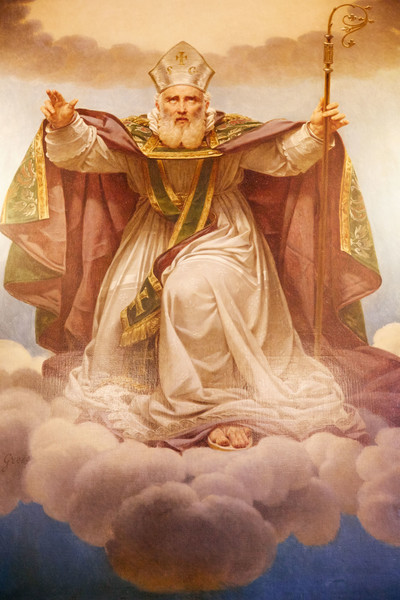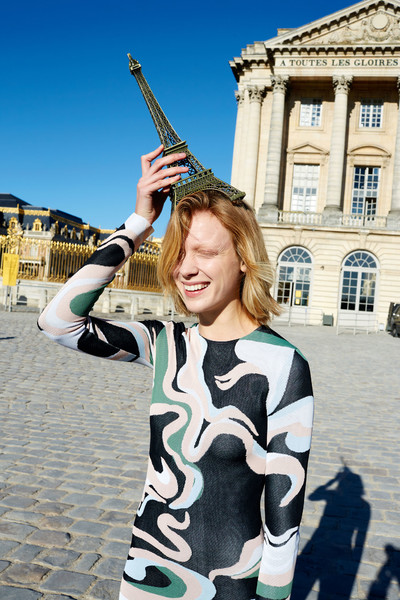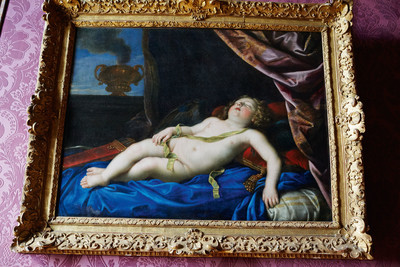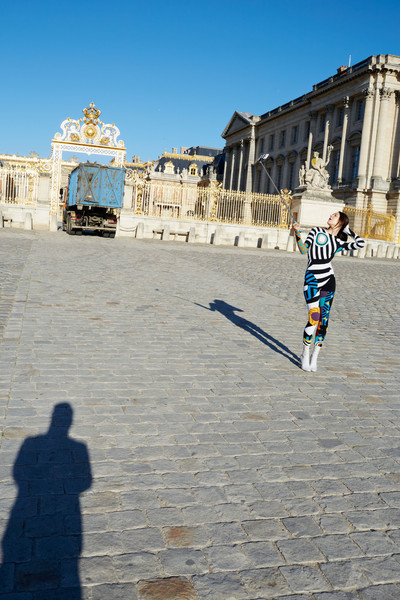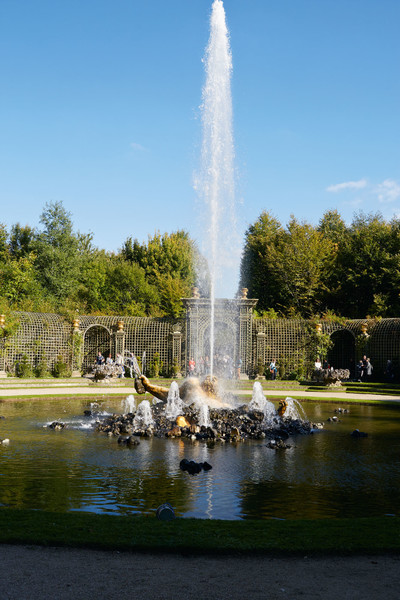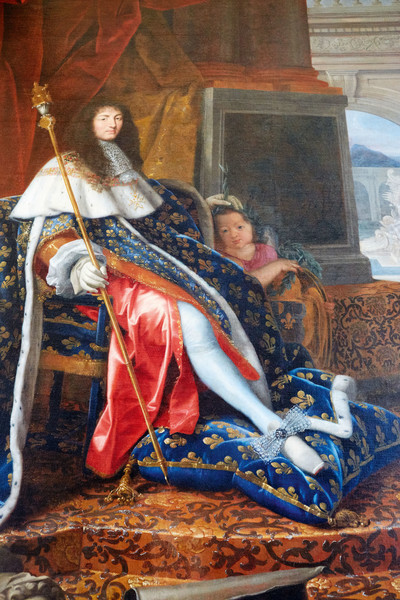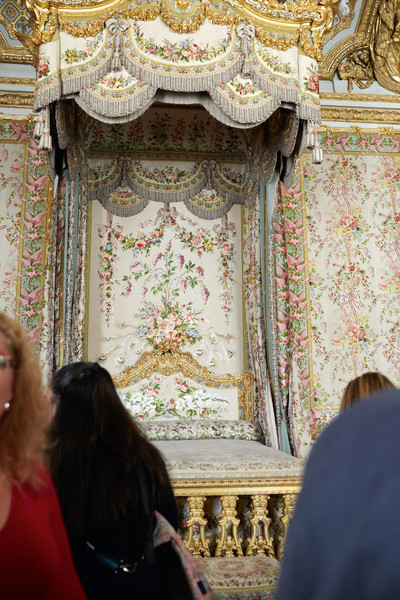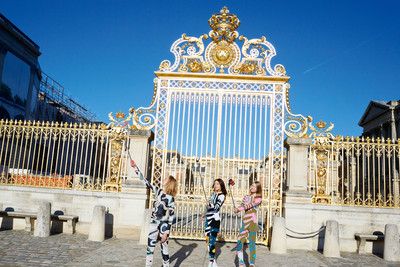Raf Simons on his final six months at Dior.
By Cathy Horyn
Photographs by Juergen Teller
Styling by Marie-Amélie Sauvé
Raf Simons on his final six months at Dior.
Raf Simons’ career can be divided into two distinct parts. In the first, beginning in 1995, he was menswear designer with a romantic obsession with youth and an equally strong modern view of fashion.
A Raf Simons show could imply a world – whether through its street casting, or an idealism expressed in school uniforms, the slim black suit of the late 1950s dandy or the discontents of a new-wave fringe group. That was Raf’s great gift: to put his mind to a truth about young men and then marshal relatively simple forms around it. Over and over he did that.
Then, in 2005, Raf went to Jil Sander to design men’s and women’s fashion. On the strength of a handful of collections that refreshed the notion of minimalism, his reputation soared. In March 2012, Raf was hired by Dior as artistic director. Although to editors he was a surprising choice – wasn’t he a minimalist? – anyone who had followed the first part of Raf’s career knew that he possessed the very qualities needed at a Paris couture house in the 21st century. He was a master team builder, an engine of ideas, and an extremely competitive man who likes to be first. At Dior, he quickly won admirers, not least in its ateliers, as demand for Dior’s modernized fashion grew by leaps.
Still and all, Raf could never have imagined the pace at which he would be working at Dior. Six major shows a year – two haute-couture, two ready-to-wear, a cruise, and a separate show in December to compete with Chanel’s Métiers d’Arts presentation the same month. Nor, indeed, could anyone a decade ago have imagined the changes that would sweep the fashion world, changes that have forced everyone to work harder and faster. This is the ‘system’ that people complain about. But Raf has actually adapted and thrived – perhaps to his own surprise. And that has been the subject we’ve been discussing over a six-month period: How does the system work at Dior?
The day before his Fall ready-to-wear show, in early March, Raf is overseeing fittings in a salon at Dior. Two tables are set up at one end of the large room, with six or seven assistants around one table, and Raf and his right hand, Pieter Mulier, along with their friend, the journalist Jo-Ann Furniss, at the other. Plates of chocolate and fruit are set out. For couture, Raf uses a many-windowed studio – the same once used by John Galliano. But for ready-to-wear, he and the team sprawl in this sedate dove-grey salon, with racks of clothes (most still with basting threads) along one wall and accessories on the opposite, and models walking in between as Raf assesses each. Sometimes the milliner Stephen Jones stops by, or the music producer Michel Gaubert, and they will watch the scene while standing against the back wall. The atmosphere is similar to that of the Chanel studio: open, relaxed, with Raf, like Karl Lagerfeld, keeping tabs on everything. The difference is perhaps that Raf prefers to have fewer distractions.
He taps a remote control and suddenly the room fills with a hard electronic beat. A model in a minidress with a chain-mesh collar begins to walk, then stops as an assistant removes the collar and looks back at Raf.
‘I think it’s better without,’ he says. ‘OK, we’re going to photograph her. And then we’re going to put her in the black boot – to double-check.’ I remark that the swirling patterns (an abstraction of animal spots) of the models’ bodysuits recall the pop prints in his January couture show, and I ask if ready-to-wear follows its themes.
‘A little bit,’ he says, hesitating. ‘In terms of the silhouette, yes, and also the attitude. Couture was about this kind of mixing of three decades that sit close together – the 1950s, 1960s, 1970s. The 1950s for the Dior kind of thing; the 1960s for its romantic ideal of the future; the 1970s for its sexual freedom. And what came out of that were some things we wanted to push further for ready-to-wear. Also, our younger clients would like to see things go further.’ He pauses and addresses the assistant: ‘Change the black boots’. I’m struck by how linear and clean the silhouette looks.
‘I just think, after three years, we should be able to bring Dior to where we want,’ he says, ‘whether it’s the shape, the colours, or the materials. Or a conceptual approach or a story approach. When I feel it, I will always very much go into the heritage silhouette. But it feels now like a moment to push away that idea and allow other, new things to come in – just as we did in the January couture. Otherwise, you always end up doing a full skirt and the Bar jacket. All the tailoring this time is not Bar, whereas in the [Esprit Dior Pre-Fall 2015] Tokyo show, it was all Bar.’
‘Every collection is now done in three weeks. When I think back to the first couture show, in July 2012, I was concerned because we only had eight weeks.’
He adds, ‘When I first started at Dior, the ready-to-wear did not feed off the couture. And now it does, because couture is only for 300 clients and because the reaction to the couture shows is so much better. The clothes are more contemporary, for one thing.’
‘So the customers want more newness?’
‘Yes,’ he says, slowly. ‘And no.’
He has cranked up the music and a model, in for a go-see, begins snaking down the carpet. Pieter and an assistant are reaching for a pair of ankle boots from a group on the floor.
‘Well, this brand can’t get stuck in its heritage,’ Raf continues, still watching the model. ‘Because everything goes so much faster today. At Jil Sander, it took us five or six years to get out of that minimal, monastic silhouette. Here at Dior, it has taken us less than three years to make the change. I didn’t expect it, either. But when you do six shows a year the evolution is faster than at a house that only does two shows. The customer gets used to seeing more.’
He looks at Pieter. ‘She needs to be seen with different coats. And let’s see the brown boots with the green heel. Yes, beautiful. Lighter.’
The day after the Dior show, Raf and I meet for lunch at a restaurant near Avenue Montaigne. He has had some sleep, but not enough to counteract the pace of the previous few days. The show was held in a modernistic tent in the Cour Carrée of the Louvre, with more than 1,000 guests. The standout was the tailoring, in particular the lean, dropped-shoulder coats, worn at times over boldly printed bodysuits or a minidress. What the collection lacked in classic Dior romance it made up for in modern ease. And the coats would have no equal during the Fall season.
‘You know, we did this collection in three weeks,’ he tells me, not defending the show but, rather, stating the reality that now faces high-fashion houses. ‘Tokyo was also done in three weeks. Actually everything is done in three weeks, maximum five. And when I think back to the first couture show for Dior, in July 2012, I was concerned because we only had eight weeks.’ He smiles. ‘And now we never have time like that. And you know? It’s clearly possible to do it, if I have my ideas together. The machine is there. Of course, we have to push really hard. It’s not like we think the ideas and mushrooms come out of the ground.’
‘Sometimes I’d like to talk about this with Karl Lagerfeld. He’s been in it so many years – there must be a structure to how he works at Chanel.’
He thinks for a moment and says, ‘Sometimes I’d like to talk with Karl Lagerfeld. He’s been in it so many years – there must be a structure to how he works at Chanel. I mean, I cannot imagine that he’s working at the rhythm and tempo that Pieter and I are working at. I cannot believe it. It’s not possible. I can’t believe he’s working on collections from 10 in the morning until 11 or 12 at night.’
‘You might be surprised,’ I say. ‘He starts very early in the morning – at home – sketching. He puts things into motion from there. He also has Virginie Viard, his right hand. You can’t underestimate her role. And I’ve seen him in the Chanel and Fendi studios late at night. So…’
Raf nods. I think he knows that a conversation with Karl might yield many valuable things, but not necessarily the answer he is seeking. Everybody has to choose a method for himself, though certainly he and Karl are in a unique boat: they alone do six big shows a year, two involving the extra precision of haute couture. And, as almost everyone in fashion knows, there’s a rivalry between LVMH and Chanel. That’s pressure in itself.
Some months ago Raf mentioned that he wanted to create a new studio structure at Dior, so I ask him about that.
‘When you do six shows a year, there’s not enough time for the whole process,’ he explains. ‘Technically, yes – the people who make the samples, do the stitching, they can do it. But you have no incubation time for ideas, and incubation time is very important. When you try an idea, you look at it and think, Hmm, let’s put it away for a week and think about it later. But that’s never possible when you have only one team working on all the collections.’
‘Also,’ he goes on, ‘what people forget is that when you do a runway show, it eats time away from your schedule. Just the prep time before a show is six or seven days, especially when you are showing abroad – ’
‘So you’re constantly creating,’ I say, ‘with no time.’
‘But I have no problem with the continuous creative process,’ he says. ‘Because it’s the reason I’m in this world. It’s always happening. I just did a show yesterday. Just now, while waiting in the car, I sent four or five ideas to myself by text message, so I don’t forget them. They are always coming.’
‘Like what? Tell me one.’
He shrugs. ‘Stupid things. I was just thinking about this kind of very masculine tailoring you see in the navy. It can be stupid things, like a certain button. But I’ve been doing this my whole life. The problem is when you have only one design team and six collections, there is no more thinking time. And I don’t want to do collections where I’m not thinking. In this system, Pieter and I can’t sit together and brainstorm – no time. I have a schedule every day that begins at 10 in the morning and runs through the day, and every, every minute is filled. From 10.10am to 10.30am, it’s shoes, let’s say. From 10.30 to 11.15, it’s jewellery. Everything is timed – the whole week. If there’s a delay in a meeting, the whole day is fucked up.’
He looks at me intently. ‘What are you going to do? Walk out of the office at 8 o’clock at night? No, of course not. So you stay there until midnight. That’s the life. So we created two design teams. Each group has a person in charge, and these people are fantastic. If Team A is working on cruise, then Team B is working July couture. Then Team A will start working on the Fall ready-to-wear show. So each group does one couture show and one ready-to-wear show.’
‘How many people on a team?’
‘Purely designers? About seven or eight.’
‘I’ve no problem with the continuous creative process. It’s always happening. Just now, while waiting in the car, I texted four or five ideas to myself.’
After some direction from Raf, a team will begin gathering research – mood boards, books. He and Pieter will then choose things they feel are worth developing. I ask Raf how often the starting point is clear to him.
‘Tokyo, for instance, was very clear. I wanted everything in the Bar jacket shape, but I wanted everything urban, like Stone Island,’ he says, referring to Massimo Osti’s utilitarian label, and the Stone Island book. ‘Away with all the lady material! Just rough, rough, rough. So it was clear for the team. There was the silhouette and the materials. That show was driven by the materials, like waxed cotton. When a collection is more story-like, it’s a bit more complicated.
‘With the Tokyo collection, we had the idea a long time and then we were ready to use it. That’s very often the case with me, though. By nature, I’m not scared, but I’m just aware of the environment and when it’s a good moment. I’m patient. I also respect that some people may not be immediately ready for an idea. Not everybody has the same way of adapting to newness – whether it’s art or fashion.’
Anyway, he says, ‘Tokyo was the first collection where we worked in the two teams, so there was a bit of stress. I took a page from the Stone Island book – of a guy in a huge brown waxed coat – and I just cut the coat into the shape of the Bar. I cut his head off and replaced it with a woman’s, and I said to everybody, “This is what we’re going to do”. It was so clear.’
At Jil Sander, I recall, he used to sit with his team brainstorming ideas.
‘I did that very often,’ he says. ‘And when the shows were running, I would sit with the whole creative team at a big table and have a dialogue. “What have you seen?” “What do you find modern? Old?” At first everyone would sit there with their mouths full of teeth and a rat face, but after a while they loved it. It became a real dialogue. And I liked it very much.’
‘But can you do that at Dior?’
‘Not at all,’ he replies, shaking his head. ‘Sometimes I do it with Pieter and maybe the heads of the teams. But the groups are too big here. There is also something else. At Dior, the moment you say, “This is an interesting thing to try”, things go very, very fast.’
In other words, the efficiency of Dior’s ateliers, not to mention the expertise of its 75 seamstresses and tailors, helps to move the design process along, which makes everyone involved more proficient, but leaves little time or room for second options.
We have finished our lunch and Raf is heading back to his office on the Avenue Montaigne. ‘So, in spite of the incredible pressures, your system seems to work?’ I ask.
He nods. ‘Technically speaking, it works. Does it work for me emotionally? No, because I’m not the kind of person who likes to do things so fast. I think if I had more time, I would reject more things, and bring other ideas or concepts in. But that’s also not necessarily better. Sometimes you can work things to death when you take too much time.’
‘People are used to processing information much more quickly now, thanks to technology,’ I say. ‘Also, shows are about communicating to large audiences, often via social media. In any age, isn’t the point to master the changes around you?’
‘Maybe,’ he says, and with a laugh adds, ‘Fashion became pop. I can’t make up my mind if that’s a good or a bad thing. The only thing I know is that it used to be elitist. And I don’t know if one should be ashamed or not to admit that maybe it was nicer when it was more elitist, not for everybody. Now high fashion is for everybody.’
A few weeks later I hear from Raf again. It is a Friday evening (his time), and he is with his driver travelling from Antwerp to Paris. Sheepishly, he reveals that he was leaving the next day to spend the weekend at Disneyland Paris with his boyfriend. Hearing my snort, he chuckles and says, ‘I actually like that kind of thing, believe it or not.’
I don’t, but decide to leave it. During his first two years at Dior, Raf rarely took breaks. He would work nonstop for four or five weeks, running up to Antwerp to check on his own business, and then he’d be back in the grind of Paris – and complaining that he didn’t have a normal life. So the news that he had done something about it was positive. He said he had been spending weekends with his boyfriend’s large family in the south of France, exploring villages and just hanging out.
‘It changes everything now.’ He then recalls a visit to a private zoo. ‘They have this kind of antelope,’ he says, and he pronounces it an-TEE-lope, which adds to the childlike wonderment. ‘They have kangaroos. They have black swans. They have ostriches and pink flamingos. But, I’m telling you, 300 pink flamingos next to that landscape, and 150 black swans, and many kangaroos’ – he clicks his tongue – ‘it was incredible. And there was almost no one there.’
Somehow we get into a discussion about the ‘State of Fashion’ – the noise, the crowded multiplex of brands, the rise of bluntly commercial clothes. Where is it all going?
I tell him I think the question is a waste of time.
‘I think if I had more time, I would reject more things, but that’s also not necessarily better. Sometimes you can work things to death.’
‘I’ve obviously stepped back from the fashion world because of my book,’ I say. ‘I spend most of my time in the late 19th century and early 20th century, when fashion was new and all the writing about it was new. I’ve learned, for sure, that everything moves in a 20-year cycle. And right now we’re in this collision of what a consumer culture wants and what the luxury business can deliver – and how quickly it can deliver. It’s like an earthquake. You simply cannot see over the turmoil. Nobody can. Still, everybody’s predicting. I wouldn’t even bother. You just have to wait until the rumbling stops.’
Raf remains silent, so I continue.
‘I actually think that what you do and what Karl does at Chanel makes the only sense. You focus on the problems you have in front of you. How to make your studios work more efficiently? How to produce six shows a year and make them vital. You answer those questions. To me, this makes the most sense. The journalists don’t know what to do with that larger question anyway. And I don’t want to waste my time with it. Consumers also don’t care.
‘You know,’ I say, ‘there is no more regular print edition of Women’s Wear Daily. After more than 100 years the newspaper is finished.’
‘Wow, I hadn’t heard that,’ Raf replies. ‘My god.’ He seems to mull this over and then says, ‘I’ve been talking to Sterling [artist Sterling Ruby] a lot about some of these things. Can ideas only work within existing systems? That’s what I wonder. I’m in a very well-defined system, obviously. But are there other situations or places where this might not be true? For example, Sterling and I took a lot of emotional satisfaction from the collaboration we did together.’ In autumn 2013, the two friends created a one-off collection that reflected their separate ideas about fashion and art, and also the ideas they have in common.
‘I think it worked because it was so unconnected to anything we had ever done before,’ he continues, ‘even though it still involved fashion and art. In a way, it was not the same as doing one of many, many collections, or one of many, many art exhibitions.’
‘It was an exhilarating show,’ I say. ‘So free in its thinking.’
‘But can an approach like that exist by itself, and survive?’
‘No, it can’t survive,’ I say. ‘It’s absolutely contrary to the existing fashion system, which wants stuff it can repeat again and again.’
Raf pauses and, after a moment, says, ‘Everything is so easily accessible, and because of that you don’t make a lot of effort anymore. When we were young, you had to make up your mind to investigate something – because it took time. You really had to search and dig deep. Now if something interests you, one second later, you can have it. And also one second later you also drop it.’
One of my all-time favourite things that Raf ever did was a video called 16, 17 How to Talk to Your Teen. Shot in 1996, in lieu of a show, when he probably had little money, it featured guys and girls bunking off from school or work to ride their skateboards around Antwerp. It perfectly captured the feeling of being young – an obsession of Raf’s at that time – and it came from a very sincere place. I saw the video for the first time in 2004, and it has stayed with me since.
I mention the video to Raf. ‘It was done out of real curiosity and freedom,’ I say, adding, ‘Not unlike the show with Sterling.’
‘In that moment, you’re very eager to get a lot of reaction and you want it to lead to something,’ he replies. ‘You start thinking, How can it become a structure and system? And what you don’t realize is that if it evolves and evolves, it’s actually going to take you away from the time that you could spend researching and thinking about something in depth. You don’t know that at the beginning.
‘And now, sometimes, I think, How can you get back to that state? And maybe you can’t. It was connected to so many things from that time. I find that very complicated.’
‘But don’t you think the show with Sterling was a kind of opening?’ I ask. ‘Why does everything in fashion – or art – have to be sustainable? Why not do something that takes two years to create, and not two weeks? Maybe present the results in a remote place. I’ve always said that some of your best shows have been done outdoors. I know this is harder today because of security and crowds. But it would be fun to think about. Having the impulse is important.’
Raf suddenly lets out a grunt. ‘You should see us here. We left Antwerp two hours ago and were supposed to arrive in Paris at 8.30 tonight. But we’re in a traffic jam, and won’t arrive until 9.50. I’m supposed to meet someone for dinner.
‘This is the feeling I have all the time,’ he continues, clearly exasperated. ‘There’s never enough time. You get a tension. I know how to pull out from this in my personal life. We go and look at nature for three hours. It’s heaven. We go to a bakery and buy a bag of stuff and lie in the grass. Sublime. But how to do that in the context of your professional life? You buy a house and you start doing pottery or something?’
He sighs.
‘Don’t do pottery, Raf,’ I say.
‘Fashion became pop. And I don’t know if one should be ashamed or not to admit that maybe it was nicer when it was more elitist.’
In May, we speak again. He had hoped to show Dior’s cruise collection in Los Angeles. So far, he has shown in Monaco and New York, with the expeditionary forces of the fashion press following. But there was a snag in the L.A. plans, so he shifted to the Côte d’Azur, specifically, Le Palais Bulles, a glorious, utopian, cliff-hanging house that belongs to Pierre Cardin. The Bubble Palace is another Raf obsession; I’ve heard him talk about it for years, never imagining that he’d show there. A sprawling compound, its round pinkish surface sprouts more round and oval shapes, like the suckers of an octopus.
‘In many ways it is a form of architecture you cannot connect to another,’ Raf tells me. ‘It is more human than rational; individual and playful.’
I ask him how the collection is progressing, and am not surprised when he says it is nearly finished.
‘It’s very Dior,’ he explains. ‘You know, I have to say they are super satisfied at Dior, but if there’s one time I don’t do a Bar jacket, they let me know.’ He laughs. ‘I mean, they don’t pressure me or anything. But on purpose I didn’t do a Bar jacket in the March ready-to-wear collection – because the Tokyo show [in December] featured the Bar. And I felt that if you already offer the style six times a year, maybe it’s good to do something different.’
‘For cruise, we’re doing quite a lot of Bar jackets, but not exactly as you’ve seen them before. There’s a lot of new materials. Mini checks. Pleats with floral prints. Weird, fresh colours… ’
‘What about the skirts?’
‘It’s difficult to explain,’ Raf says. ‘If a coat from Dior is 100 percent, and you take away 20 percent, that portion becomes a skirt. If you cut everything from the knee to the waist, and you keep that kind of volume, with the overlaps, then that is the skirt. There’s also a lot of knitwear. I work now with the two girls I worked with at Jil – that is really heaven.
‘There’s also a little story that you could say is a marriage between a bathing suit and an evening dress. The starting point for the collection was to have something like workwear – an overall, for example. But how can workwear grab the aesthetic of Dior and also have the same functionality? And be made with the minimum amount of fabric and still be covered? For me, the collection is very sweet and young.’
‘So you’ve already given the other design team the direction for the July couture?’ I ask. ‘Have they started work?’
‘Yes. They began doing the research and then I went through everything to find what was interesting.’
‘And do you have a clear direction at this point?’
‘Yes, couture is going to be about Flemish primitives.’ He says this with energy, as if he has been storing up the idea for some time. In fact, certain collections hold more fascination for him than others, and I could tell this was the former. Naturally I think of the milky Flemish colours and the more homey scenes, but he seems to anticipate that, and cuts me off.
‘It’s a big challenge in my head,’ he says, as if he has read my thoughts. ‘Well, it has a lot of the colours of the paintings, but I don’t want it to be only that. In the end, in fact, I don’t want people to be able to guess what the inspiration was.‘In those paintings a lot of the clothing was just a drape to make the painting look good. There were a lot of garments, of course, but also some unfinished fabrics. It made me think of how the process in an atelier happens, too. You find pictures of Christian Dior in the studio doing exactly that kind of thing, working with a piece of fabric. So in my head I’m analysing all the phases that go into making a collection. One collection that I’m really looking at is by Martin Margiela – the one with the fur wigs by the Bless girls. Do you know that one?’
I confess I don’t. But, in 1997, apparently low on funds, Margiela created an ingenious collection using leftover fabrics, with the models wearing underpinnings that made their bodies look like the taut canvas forms of a Stockman dummy. The clothes looked half-finished – and all the more lovely and modern for it. Also, there were substantial coats in the collection, oversized, some missing sleeves, and they easily related to something historical, though just what was hard to identify.
‘That was a masterful, masterful show for me,’ says Raf. ‘I always thought of it as “Flemish primitives”. Anyway, the July couture collection is hard to explain, and it’s still in the early stages. But when you look at a painting, it’s a pose. It’s a still. My question is, How can you think about that and make it very dynamic and very modern? We already did one couture collection linked to different centuries. So I thought, OK, this could be the biggest challenge for me yet in couture.’
Personally, I am struck by how far Raf has come since his debut show at Dior in summer 2012, a show that featured separate rooms lined with masses of fresh flowers and which was captured in the documentary Dior and I. You could of course see the connections to Margiela and the Flemish painters, mainly Hieronymus Bosch’s The Garden of Earthly Delights, a key reference. But for me the show transmitted a dazzling sense of freedom and imagination, not only in the variety of coats – some with a single, wide fur sleeve, others more like cloaks – but also in the serene, very plain floor-length dresses in white organza and in the fresh combinations of colours. Like many of Raf’s shows, the clothes were open to interpretation: the cloaks evoked both Poiret in the 1910s and Yamamoto in the 1980s, as well as capes that Raf did in a late 1990s men’s show. By the September shows in New York, you could see his influence everywhere, especially those extravagant sleeves and white dresses.
‘How do you pull away from all this tension in your professional life? Do you buy a house and start doing pottery or something?’
Later, Raf tells me, ‘We have to experiment in couture. You know, in the beginning at Dior I didn’t think like that. Now I think it’s very interesting in couture to experiment.’ I point out that he and his design team also had more time to work on the July couture show, since cruise was pretty much done in late April.
Raf gives a dry laugh. ‘Yeah, but it’s still really heavy. What annoys me more, psychologically, is the Antwerp situation – because my own men’s collection sits in the middle of our Dior schedule and there’s no structure in Antwerp. There’s no pattern department. Things take weeks to be made, and often they come back with mistakes.’ He pauses. ‘That’s the incredible part about Dior. If the direction is there, then the work will come very smoothly. The people in the ateliers make it happen.’
In some respects, Raf’s thought processes and his method of working have not changed over the past 20 years. He has always been good at breaking down an idea, simply and directly, and in trusting his instincts. But a theme common to some of his early men’s shows was the power of the individual to shape his world – as Raf himself has done. This notion was at the heart of his History of My World show, in July 2004, a personal turning point for him. Not long after, he was hired at Jil Sander, his talent now on display in the larger arena of women’s fashion.
So I wonder how this notion of the individual fares in the new system of big brands and teams. Have Raf’s feelings been necessarily tempered? And is this idea still considered a virtue? I ask two people close to him: Furniss, who has known Raf for about 15 years and who works on texts for him at Dior, and stylist Olivier Rizzo, who Raf regards as a brother.
Jo-Ann Furniss: It’s that delicate balance of being yourself and having other people be themselves as well, but also in tune with your ideas. You can see that in his collaboration with Sterling Ruby. At Dior, it’s most evident in the haute couture. The collections are as much about the men and women in the ateliers as they are about Raf. But he makes that possible.
Lately I’ve been reading a lot about Hollywood’s Golden Age. Who today would be the equivalent of those great studio bosses? And I thought, It’s the designers. I mean, movie studios are no longer run by a boss. They don’t have that individual style – when you could tell a Paramount picture from a Columbia picture. Well, that’s what designers are now – these great impresarios running these huge things, that have this identity and impact on people’s lives in a dream-like way. With designers like Raf and Karl and Miuccia Prada, you get these incredible characters. They are not conventional. And that difference comes out in everything that happens in their houses. The pressures sound gruelling to people on the outside. But that insanity also worked for the movies. Out of that insanity came some of the great classic movies.
Olivier Rizzo: After Jil Sander, going to a house with Dior’s level of possibilities was the logical next step for Raf. You always want more for him. He is someone who needs creative challenges in life. For me, the Tokyo show really set the vision for who he is and what his vision for Dior is – what a big global luxury brand can and should be in 2015. You sensed that again at the July couture show. I think it all felt kind of effortless – his evolution from one level, to another step, to another show, to more shows, to shows abroad. I kind of feel it all happened smoothly. Of course we all know that it was not effortless. It took a lot of work and discipline and delegation.
You feel a hand throughout all of Raf’s designs, for Dior or his own men’s label. You feel a sensibility. In that sense, if you look at his total career, you see that he was born a couturier. It’s actually what he has always done in menswear: couture for men. From the beginning. He has always worked on the body, the way a real couturier does. And I don’t think Raf even realizes this, because he works so instinctively. You know, he never has any restrictions for himself. His mind is totally open and free. That’s why, if you look at the total line of his work, it’s incredible to put some of the early Raf Simons looks, next to Dior couture, next to Jil Sander women’s looks. Only very, very strong designers have that – a certain sensibility.
Cathy Horyn: So, despite the extreme pressures of the system, he still exerts his individuality. Raf, as you know, often complains that it would be easier to do three shows a year, like some of his peers. But maybe that’s just a case of ‘the grass is always greener on the other side’…
Olivier: It’s a little bit of that.
Cathy: Because he also admits that having more time to work on a collection doesn’t necessarily mean it will be better. You can work something to death…
Olivier: I’m actually really happy that he said that. The fact that you’re forced to rely on your instincts is often what makes the work interesting.
‘I like the idea of doing something very calming in the midst of what I think in fashion is now one huge mess, a melting pot of overdone clothes.’
On October 2, a blue-sky day, Raf presents Dior’s Spring 2016 ready-to-wear show, back in the Cour Carrée of the Louvre. A small mountain of sod and delphiniums – some 300,000 blue and white stems – confronts guests as they enter the cobbled courtyard. Most of Dior’s shows have had a flower theme, but this set is on a bigger scale. The mountain appears to crash through the white-box show space, so that one side of the delphinium-covered hill looms over the audience. In his heart of hearts, Raf might have preferred an actual pastoral setting, but such a trek wouldn’t be realistic. Besides, the hill is in its own way beautiful, a blue oddity in the midst of the monumental public space.
Work on the collection has gone smoothly, and though Raf and Pieter and other members of the team have been in the studio until the early hours of the morning, they don’t look tired when I see them backstage, as the models begin to line up. ‘Light, light, light,’ says Raf of the collection, much of it done in sheer white organdie, filled with delicate, scallop-edge dresses and shorts evoking underwear. Some of the pieces evoke styles from the July couture show, like the fluttery under-layers of pleats and, of course, the hint of lingerie, a story he actually began a year ago with white sack dresses that vaguely suggested a Victorian night shirt.
But fundamentally the Spring clothes are more about a respite. ‘I wanted to do something very calm,’ he says. ‘I like the idea of doing something very calming in the midst of what I think in the fashion world is now one huge mess, a melting pot of overdone clothes.’ Certainly the white dresses and skirts, or a lovely, loose-fitting sleeveless black coat dress with pleating, force you to look more carefully at the details than a garment with glossy fringe or embroidery might. There is a lot of that in the Spring collections, stuff that immediately grabs the eye online.
‘For me, it’s more interesting if you have to look closely at something,’ Raf tells me. ‘Then it’s purely about the construction and the outline, not the presence of print or jacquard. It may sound very simple, but it’s not. When you’re working with just transparent organza – hmm, well, try to make it great.’ He laughs. ‘The pleating in this collection is really incredible, though it isn’t obvious. Some of the pieces took eight or nine days, because controlling the pleating on that light material is difficult.’ We have come to the end of our conversation. It is clear to me that Raf has mastered a complex system even if he has reservations about its logic. He will always be self-critical, a quality that helps any designer. He is also honest. I raise the question about individuality, referring back to the 2004 men’s show, the same question I had put to Furniss and Rizzo.
Does he feel, even with the creative measures he has installed at Dior – the two-studio system – that the power of the individual can still come through in a major fashion house?
The answer is not so straightforward, he says, because there will always be commercial responsibilities you can’t ignore. But, no, Raf says, ‘I am not able to express myself the full way I would wish to. I would be more extreme.’
